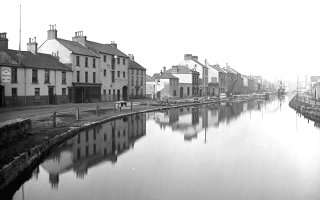Any western social and economic history of recent times will focus centrally on the Industrial Revolution (usually dated from the mid-eighteenth to the mid-nineteenth centuries) – which paved the way for our modern state of development. Industry and production shifted from cottages to factories, from country to cities, and serviced not just the home but many foreign markets as well.
Our subsequent prosperity rests upon many factors – some, such as the ruthless exploitation of ‘colonies’ – rarely alluded to! A good transport system and improved harbours were also essential.
Here we focus on the work of one man, little lauded and hardly remembered, who made a significant contribution not just in his home country of
The engineering works of Thomas Steers (1672-1750) at Liverpool port helped raise it to the premier position in the whole world of the time: even while he continued to work there he served as Chief Canal Engineer on the Newry Canal, a navigation that soon helped to raise our own town to the fourth most important port of the whole of Ireland.
Thomas Steers had a good early education before he entered the army (King’s Own Regiment of Foot) and he served both at the
Abroad he had come to the attention of the Hon. J Stanley who commanded the 16th Regiment of Foot in
Early in 1708 the merchants and politicians of
The Dock opened for shipping by 1715. A new Act of Parliament in 1717 authorised the construction of a dry dock and three graving docks next to the entrance to the dry dock. S teers reported completion in 1721, when the new Customs House was also opened.
Meanwhile Steers was involved also in other works, among them the
He was asked in 1729 to be engineer on the Newry Navigation project but his request for a hundred guineas a month was rejected. An Irish architect Edward Lovett Pearce was appointed with Richard Cassel, his assistant, taking over on Pearce’s death in 1734. In 1736 Steers was paid fifty guineas for a survey. In the following year he took over responsibility from
